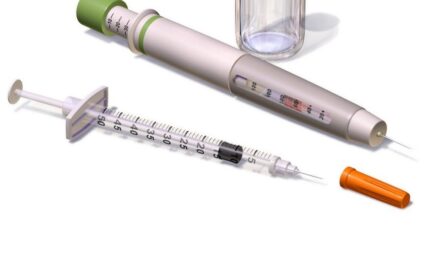Neurovascular devices are medical devices and technologies that are used to diagnose and treat disorders affecting the blood vessels in the brain and spinal cord. These disorders can include aneurysms, arteriovenous malformations, carotid artery stenosis, and others. Neurovascular devices allow physicians to access the brain’s blood vessels through minimally invasive techniques rather than open surgery. Some common types of neurovascular devices used today include coils, stents, flow diverters, embolic protection devices, catheters, and microcatheters.
Coils for Aneurysm Treatment
One common application of Neurovascular Devices is in the endovascular coiling of brain aneurysms. A brain aneurysm is a bulge or ballooning in the wall of an artery in the brain. Untreated aneurysms can rupture, causing life-threatening bleeding in the brain known as a subarachnoid hemorrhage. Coiling involves using catheter technology to deliver soft, pliable coils into the interior of an aneurysm. As more coils are deposited, they help to promote the formation of a clot to occlude or fill the aneurysm, reducing the risk of rupture over time. Coiling is now the standard of care treatment for many unruptured aneurysms due to lower risk levels compared to open surgery. Continued development of new coil designs aims to improve treatment safety and effectiveness.
Flow Diverters for Complex Aneurysms
For very large or giant aneurysms not adequately treated with coiling alone, a newer type of neurovascular device called a flow diverter may be used. Flow diverters are self-expanding stents specially designed to redirect blood flow away from the aneurysm and towards the parent artery, while also inducing the formation of a neck across the aneurysm opening. By altering blood flow dynamics, they can achieve complete occlusion of even very large aneurysms over time in many cases. However, they come with their own risk profile and are typically only offered for patients who cannot otherwise be effectively treated. Ongoing trials evaluate new flow diverter designs and their risk-benefit in different aneurysm contexts.
Stenting Carotid and Intracranial Arteries
Carotid artery stenting using balloon-expandable or self-expanding stents is an alternative to carotid endarterectomy surgery for treating carotid artery stenosis. This blockage of the carotid artery in the neck increases stroke risk if left untreated. Placing a stent helps reopen the artery lumen. Similar techniques involving precisely guided catheterization and stent placement are also used to treat intracranial arterial stenosis within the brain itself. This helps prevent future strokes caused by blocked intracranial arteries. Technical advances aim to make intracranial stenting a safer option for more patients.
Embolic Protection Devices
When performing revacularization procedures that involve stenting within carotid or intracranial arteries, there is a danger of plaque or clot dislodging and blocking smaller downstream vessels, causing an ischemic stroke. To help avoid this, embolic protection devices are used which create a barrier during the procedure that captures any debris. These devices temporarily deploy wire filters or balloons beyond the target lesion to capture any friable material that may detach during catheter manipulation or stent placement. The captured debris is then retrieved under imaging guidance before removing the protection device, thereby reducing periprocedural embolic risk.
Intraoperative Neurovascular Imaging
Advances in neurovascular imaging technology are helping to guide treatment. Intravascular ultrasound (IVUS) provides high resolution images from inside blood vessels to visualize plaque, vessel dimensions, and stent expansion during procedures. Optical coherence tomography (OCT) offers even higher resolution to evaluate stent strut apposition and potential surface defects. New fusion imaging combines preoperative CTA/MRA with live fluoroscopy to overlay vessel roadmaps. This enables more accurate catheter navigation for treating even tortuous vascular anatomies. Integrating multiple imaging modalities helps physicians precisely deliver and deploy neurovascular devices.
Monitoring and Post-operative Care
Following neurovascular procedures, patients are monitored closely for complications. Any neurological changes are noted, and follow up imaging studies like CTA/MRA are scheduled to confirm adequate treatment and resolution of the target condition over time. For certain high risk cases, implantable monitors check for microembolic signals that could indicate residual aneurysm filling or atherosclerotic plaque activity. Antiplatelet medications are typically prescribed short term after stent placement, while anticoagulation may be needed following placement of certain device technologies. Close collaboration between neurosurgeons, neurointerventionalists, and neurological specialists helps optimize post-procedural care.
Future Advances and Conclusion
Ongoing development continues to expand treatment options. Bioresorbable stents and coatings aim to provide scaffolding then dissolve safely over time. Flow modification devices target complex vascular anomalies beyond aneurysms. New access devices strive for safer transcranial or transvenous routes. Robotics and holographic visualization may one day transform neurointervention. Regardless, neurovascular devices currently offer minimally invasive solutions where once only open surgery was possible. Outcomes continue improving as physician skills and technology progress together. For patients, these innovations mean fewer surgical risks, shorter recovery times, and lifesaving treatments for even the most difficult brain and spinal vascular disorders.
*Note:
1. Source: Coherent Market Insights, Public sources, Desk research.
2. We have leveraged AI tools to mine information and compile it.




